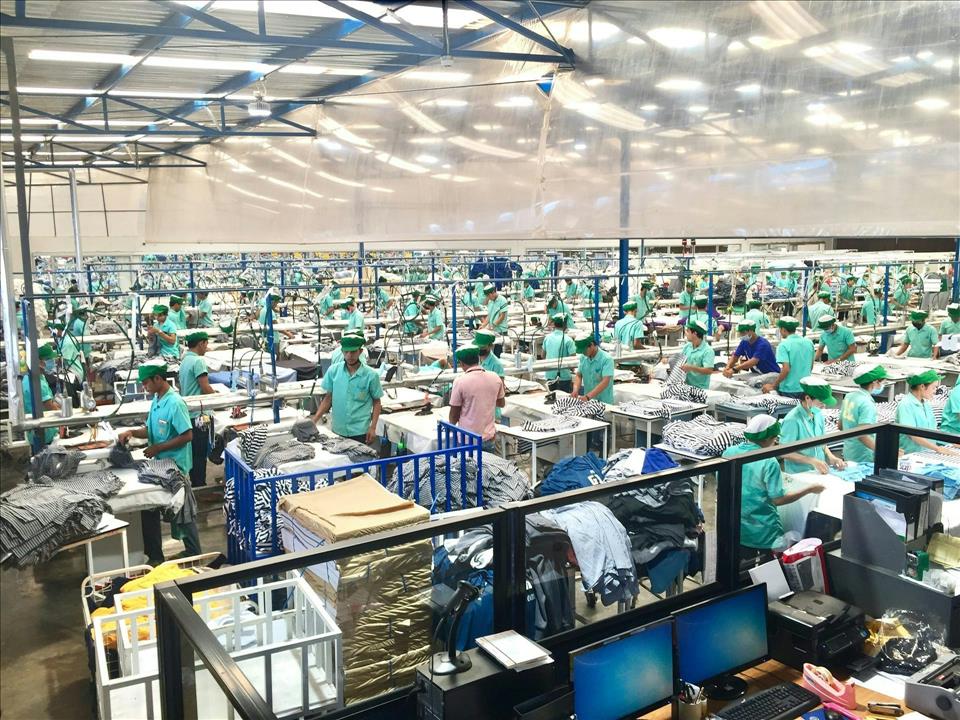Trump's Tariffs: Poor Workers In Countries Like Cambodia Will Be Among The Biggest Losers
For when the US president first set out his reciprocal tariffs – later paused for 90 days – some of the highest rates were for countries like Vietnam (46%), Bangladesh (37%) and Cambodia (49%).
These are places that make huge amounts of the clothes we wear, and even the reduced 10% tariff could be a big blow to their economies – and the people who depend on them.
Because aside from the well known sweatshop conditions suffered by many workers in these places, brands and manufacturers often offset new costs by passing them on to workers in the form of lower wages and higher demands.
This phenomenon, sometimes referred to as “social downgrading” , was seen during the pandemic , when garment workers around the world faced mass layoffs and even worse working conditions to protect corporate profits when consumer demand decreased.
And those working conditions are already challenging. The minimum wage for one of Cambodia's 1 million garment workers (from a total population of 16 million) is just US$208 (£155.50) per month.
Around 80% of those workers are women, whose wages often support children and elderly parents, who don't have the security of a state pension safety net.
It is these workers and their families who may end losing the most in Trump's trade war. But they are used to geopolitics affecting their everyday lives, having suffered the impact of tariffs fairly recently – from the EU.
In 2020, Cambodia's duty-free, quota-free access to the EU market (usually granted to developing countries) was partially revoked as a punitive response to human rights concerns. Tariffs averaging 11% were added to some product lines, mostly clothing and footwear, which covered about 20% of Cambodia's total exports to the EU.
The Cambodian government immediately responded by cutting public holidays and workplace benefits to try offset any increase in costs.
It has since slowed the rate of minimum wage growth to below inflation. Both actions slashed real wages and made the challenge of economic survival even harder for those who depend on the industry.
Now, as Trump's latest tariffs take hold – even at the lower rate of 10% – many garment and footwear industry workers will fear for their jobs.
But even those“lucky” enough to keep them will face mounting pressures to produce more, and more quickly, to offset rising costs – at the direct expense of their own financial security and wellbeing.
The idea that tariffs will ultimately bring jobs back to the US ignores that fact that these jobs – precarious, underpaid and frequently dangerous – are not the kind of jobs that any American would want.
International supply chains are deeply embedded. PX Media/Shutterstock Supply chained
And the evidence suggests that if even if they did want them, international manufacturing supply chains are more deeply embedded than people might think.
After the EU imposed its tariffs on Cambodia for example, brands could have looked to circumvent those added costs by relocating production. As it turned out, the volume of trade between Cambodia and the EU has remained steady since – because sometimes there's no alternative.
With Cambodia, companies have not been willing or able to shift production to competitors like Bangladesh, Myanmar or Sri Lanka, partly due to the political volatility in those countries.
Added to this is the fact that clothes production has become highly specialised geographically . Cambodia's distance from the EU means it focuses mainly on seasonal fashion“basics” such as T-shirts and knitwear.
Closer countries like Turkey and Morocco concentrate on the latest fast fashion trends, as their shorter shipping routes mean they can be quicker to respond to changing tastes.
It is not that easy to unsettle the systems and markets that are already in place.
As a result, in the global garment industry at least, Trump's tariffs may not trigger a complete restructuring of the world's supply chains. In the short term, they are instead likely to cause great uncertainty, reducing investors' appetite for long-term planning, and reducing their confidence.
Orders may slow and prices may rise. And Cambodians making the world's T-shirts and trainers will face even more pressure on their wages and working conditions.

Legal Disclaimer:
MENAFN provides the
information “as is” without warranty of any kind. We do not accept
any responsibility or liability for the accuracy, content, images,
videos, licenses, completeness, legality, or reliability of the information
contained in this article. If you have any complaints or copyright
issues related to this article, kindly contact the provider above.
Most popular stories
Market Research

- Global Plant-Based Meat Market Report 2025: Size Projected USD 100.31 Billion, CAGR Of 21.92% By 2033.
- Primexbt Launches Empowering Traders To Succeed Campaign, Leading A New Era Of Trading
- TOKEN2049 Singapore Breaks Records: 25,000 Attendees At The World's Largest Web3 Event
- Japan Well Intervention Market Size To Reach USD 776.0 Million By 2033 CAGR Of 4.50%
- Blackrock Becomes The Second-Largest Shareholder Of Freedom Holding Corp.
- United States Acetic Acid Market Size, Growth & Forecast 2033






















Comments
No comment